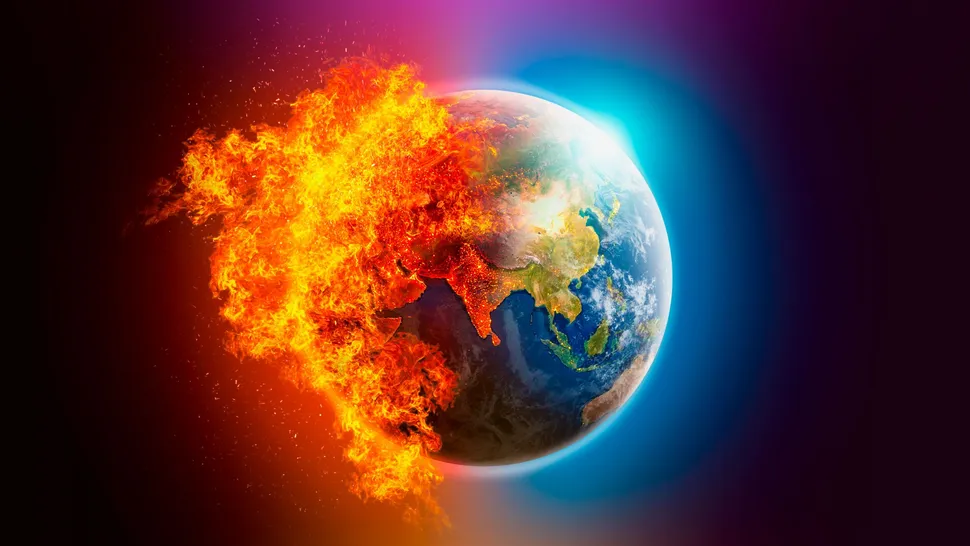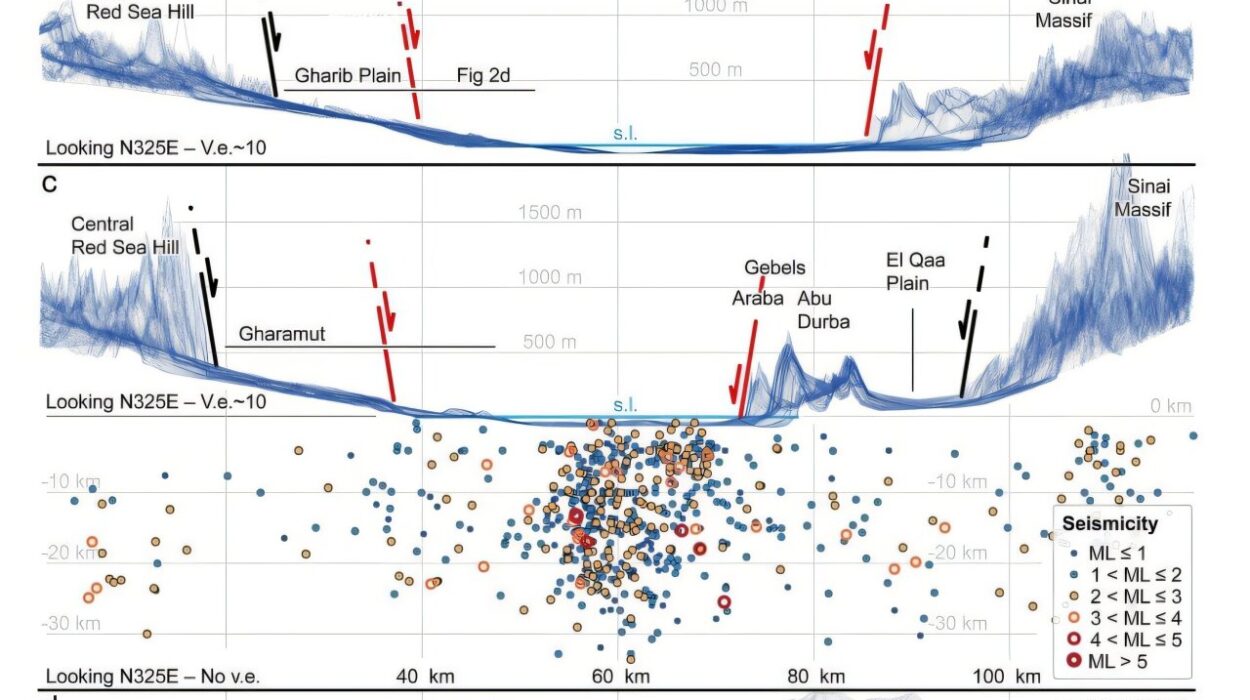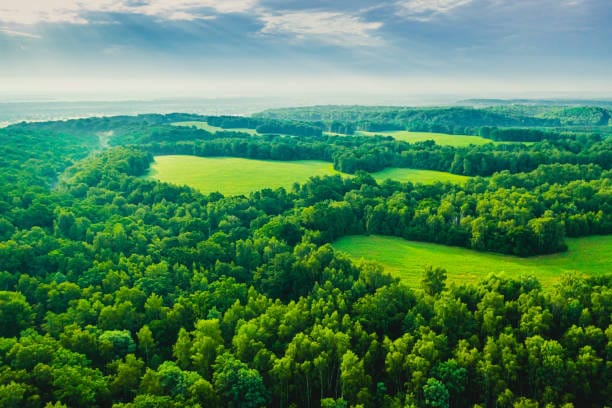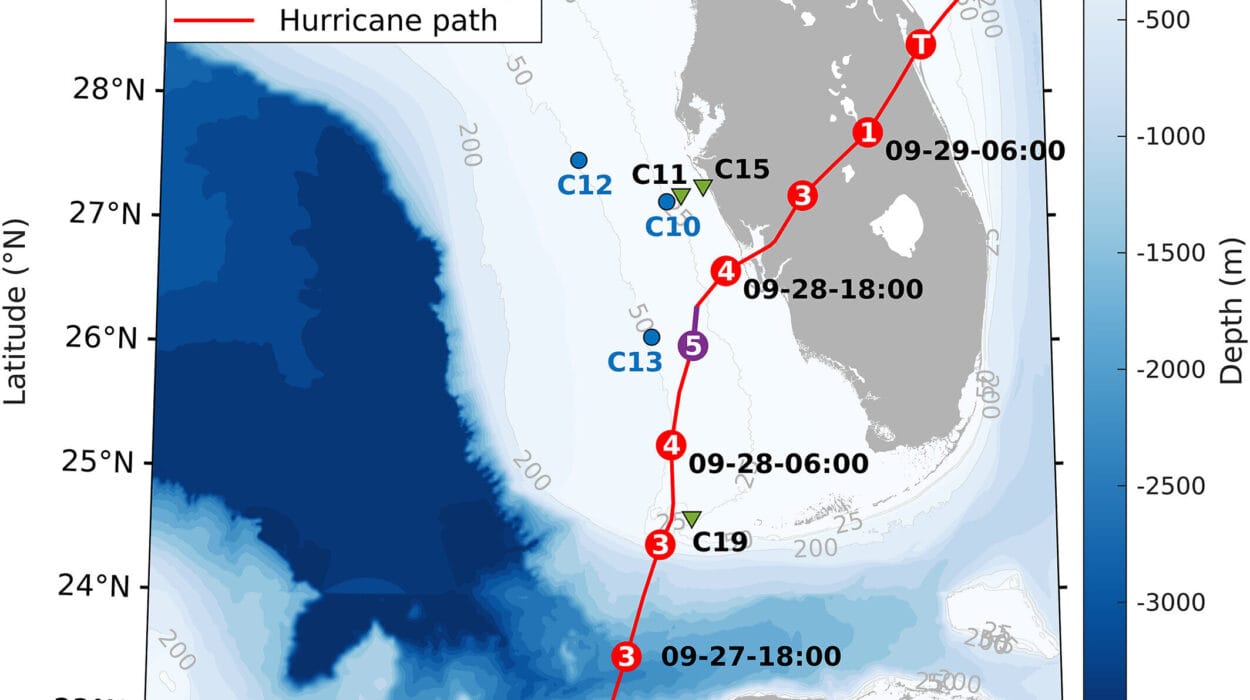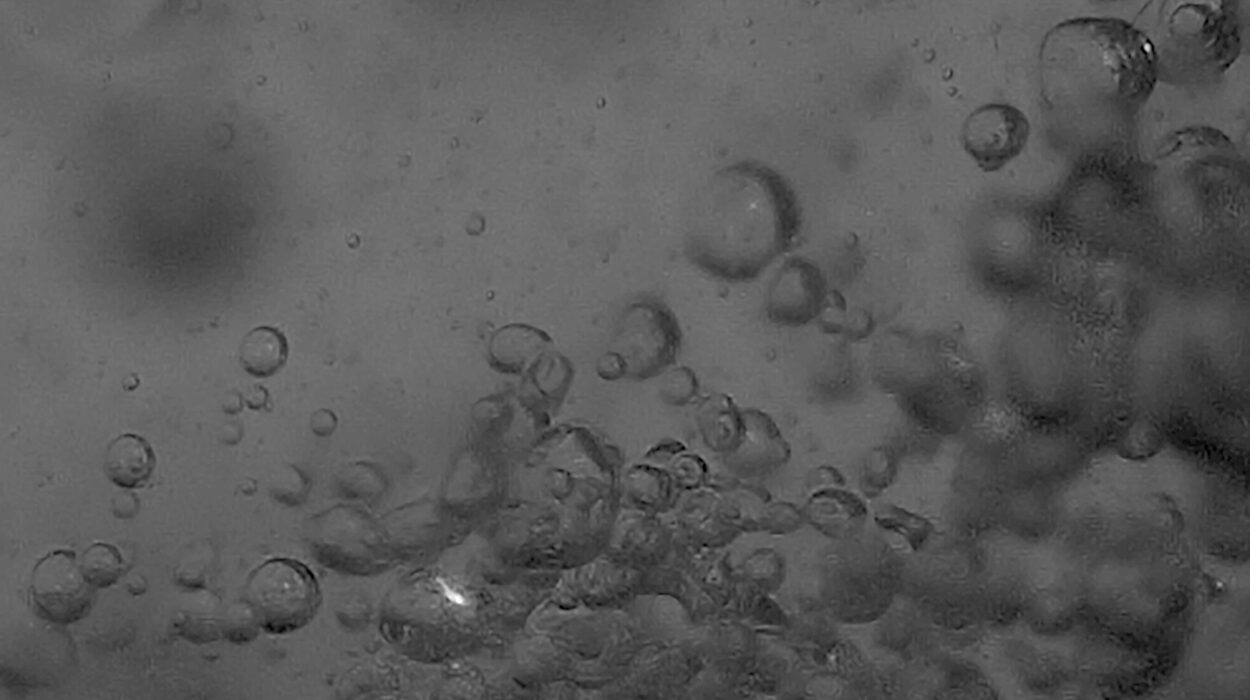More than four and a half billion years ago, Earth was born from the dust and chaos left behind by a dying star. It spun to life in a frenzy of fire, its surface molten and merciless. There was no blue sky, no seas, no signs of life—only lava rivers and poisonous fumes that billowed into a thick, turbulent atmosphere.
But the climate story of Earth begins not in fury, but in patience. Slowly, volcanic outgassing created an atmosphere rich in carbon dioxide, water vapor, and other gases. Then came the rains. Endless torrents of water poured from the heavens for centuries, cooling the planet’s surface and filling its basins to form oceans. Those early oceans, under dim sunlight and thick cloud cover, became the womb for the first stirrings of life.
The climate of early Earth was alien, yet surprisingly stable given the chaos around it. Despite a sun that was 30% dimmer than it is today, Earth didn’t freeze into an eternal iceball. Why? Scientists now believe the secret lies in greenhouse gases. Carbon dioxide and methane trapped enough heat to keep the planet warm. Without them, Earth might have been a frozen wasteland. The climate, even in its infancy, was already dancing a delicate balance.
Snowball Earth and the Great Oxygenation
Around 2.4 billion years ago, something extraordinary happened. Tiny microbes—cyanobacteria—learned to harness the power of sunlight. Through photosynthesis, they began to produce oxygen, one of the most transformative chemical shifts in Earth’s history. This event, known as the Great Oxygenation Event, didn’t just pave the way for complex life—it also shook the climate to its core.
As oxygen levels rose, methane—then the dominant greenhouse gas—was broken down. The planet cooled drastically. Ice crept from the poles toward the equator, until Earth may have been almost entirely encased in ice. Scientists call this frozen catastrophe “Snowball Earth.” For tens of millions of years, glaciers wrapped the planet in silence, reflecting sunlight and locking the climate in a deep freeze.
Yet life persisted. Volcanic eruptions continued beneath the ice, releasing CO₂ into the air. Slowly, the greenhouse effect built up again. And then, like an ancient exhalation, the planet thawed. Temperatures soared. Oceans boiled at the surface. The climate swung from deep freeze to greenhouse fever, a cycle that would repeat itself in various forms throughout Earth’s history.
The Age of Dinosaurs and a Hotter World
Fast-forward to 250 million years ago. The dinosaurs reigned. The world they walked was warmer than ours—sometimes dramatically so. There were no polar ice caps. Tropical ferns grew as far north as what is now Alaska. Sea levels were higher. The atmosphere was rich in CO₂.
These ancient hot-house conditions weren’t accidental. Massive volcanic eruptions, particularly those that created giant plateaus called large igneous provinces, released colossal amounts of carbon dioxide. One of the most catastrophic such events, the Siberian Traps eruptions around 252 million years ago, is linked to the most severe mass extinction in Earth’s history. Over 90% of marine species and 70% of land species vanished. The climate had become a killer.
Despite this, life rebounded. Over millions of years, Earth’s ecosystems rebuilt themselves. Climate cycles—glacial and interglacial, warm periods and cold—continued to shape the stage on which life evolved. Dinosaurs flourished, birds took to the skies, flowering plants appeared, and mammals began their quiet ascent.
But the climate was never static. Around 65 million years ago, a cataclysmic asteroid impact near what is now Mexico changed everything. Dust and aerosols clouded the sky. Sunlight vanished. The Earth plunged into a short-lived but devastating cold snap. The age of dinosaurs ended. The climate had once again written a new chapter, this time opening the door for mammals to thrive.
The Rise of Ice and the Birth of Humans
In the last 2.5 million years, the Earth entered a period known as the Quaternary. It’s during this time that the planet began to experience repeated glacial cycles—ice ages. Vast sheets of ice advanced from the poles, scraping and reshaping the continents, then retreated, only to return again in great rhythmic pulses.
Why did the climate suddenly turn colder? One clue lies in Earth’s orbit. Our planet doesn’t move in a perfect circle around the sun. Instead, it wobbles, tilts, and stretches its orbit in complex patterns called Milankovitch cycles. These orbital variations subtly change how much sunlight different parts of the planet receive. Over thousands of years, they can tip the balance between an ice age and a warmer interglacial.
These shifts in climate profoundly affected the evolution of life—especially humans. Our ancestors emerged in Africa during one of the many warmer interglacial periods. Climate fluctuations shaped where humans could live, what they could hunt or grow, and how societies developed. Droughts likely pushed early humans to migrate across continents. Cold snaps may have led to new technologies like fire, clothing, and shelter.
Humanity did not simply witness Earth’s climate story—we were born into it, shaped by it, and eventually, began to shape it ourselves.
The Holocene: A Brief Interlude of Stability
Around 11,700 years ago, the last major ice age ended. Glaciers retreated, sea levels rose, and a more stable, warmer climate settled over much of the planet. This period is known as the Holocene, and it is no exaggeration to say that it made civilization possible.
With predictable seasons and fertile lands, humans began to farm. Agriculture replaced hunting and gathering. Villages grew into cities. Trade flourished. Writing emerged. Empires rose and fell. Through it all, the climate remained relatively gentle—though not without occasional hiccups.
The Holocene wasn’t a perfect paradise. Volcanic eruptions triggered famines. Solar cycles contributed to colder periods, such as the Little Ice Age between the 14th and 19th centuries. Droughts ended civilizations like the Maya and the Akkadians. Still, compared to what came before, it was a climatic golden age.
But it was also during this time—particularly in the last few centuries—that humanity began to unknowingly alter the climate’s script.
The Industrial Revolution and a New Climate Era
When humans discovered how to burn coal on a massive scale during the Industrial Revolution in the 18th century, they unlocked tremendous energy. Factories roared to life. Cities swelled. The global economy transformed. But along with steam engines and electric lights came an invisible byproduct: carbon dioxide.
At first, the changes were too subtle to notice. But as the 20th century progressed, scientists began to ask an urgent question: Could all this burning of fossil fuels be altering Earth’s climate?
The answer, it turns out, was yes.
In 1958, scientist Charles David Keeling began measuring CO₂ levels at Mauna Loa Observatory in Hawaii. The upward curve he recorded—now called the Keeling Curve—showed a steady rise in atmospheric carbon dioxide. In 1988, the Intergovernmental Panel on Climate Change (IPCC) was formed, bringing together scientists from around the world to understand and project the implications of global warming.
Today, that warming is undeniable. Global average temperatures have risen by over 1°C since pre-industrial times. Glaciers are melting. Sea levels are rising. Heatwaves, floods, and wildfires have grown more frequent and severe. And the cause is clear: human activity, primarily the burning of coal, oil, and gas.
What the Future Holds: Climate Models and Projections
Predicting the future of Earth’s climate is no small task, but scientists have developed sophisticated tools to do just that. Climate models—powered by physics, data, and supercomputers—allow researchers to simulate how the planet might respond to different levels of greenhouse gas emissions.
The projections paint two very different futures.
In one future, we continue emitting greenhouse gases at current rates. By the end of the 21st century, global temperatures could rise by 3 to 5 degrees Celsius. This warming would bring with it more powerful storms, the loss of coral reefs, widespread droughts, and the displacement of hundreds of millions due to sea-level rise and food insecurity. The Arctic could be ice-free in summer. Ecosystems would collapse under the stress of rapid change. The cost to humanity—in lives, economies, and culture—would be profound.
But there’s another future—one of hope and resilience. If the world acts decisively to cut emissions, protect forests, and transition to renewable energy, warming could be limited to 1.5 to 2 degrees Celsius. It would still be a challenging world, but far more manageable. This path would require unprecedented cooperation, innovation, and determination, but it is scientifically and technically achievable.
The Role of Nature: Feedbacks and Tipping Points
One of the most sobering aspects of climate science is the concept of feedback loops and tipping points. In nature, change is not always linear. Sometimes, a small nudge can lead to a cascade of consequences.
As ice melts, for example, it exposes darker surfaces underneath, which absorb more sunlight, leading to further warming. Thawing permafrost releases methane, a powerful greenhouse gas, which amplifies the effect. The Amazon rainforest, once a carbon sink, risks becoming a carbon source if too much of it is lost. These feedbacks can accelerate warming beyond our ability to control.
Tipping points—thresholds beyond which systems fundamentally change—are especially dangerous. Scientists worry about the collapse of the West Antarctic Ice Sheet, the slowdown of ocean currents like the Atlantic Meridional Overturning Circulation, and the death of major ecosystems like the Great Barrier Reef. Crossing these thresholds could lock in centuries of irreversible change.
Humanity’s Fork in the Road
We are the first species to have the power to alter the planet’s climate—and the first to understand what that means. The choices we make today will ripple for centuries, possibly millennia. But this is also a moment of incredible opportunity.
Clean energy is becoming cheaper than fossil fuels. Innovations in battery storage, carbon capture, and sustainable agriculture are accelerating. Reforestation projects are restoring landscapes. Young people around the world are demanding change. Governments, cities, and companies are pledging net-zero emissions.
The story of Earth’s climate is still being written. And for the first time, we are not just characters in this story—we are co-authors.
In the End, a Living Planet
Through all its epochs of fire and ice, of mass extinction and rebirth, Earth has remained a living planet. Its climate has shaped life, and life has shaped the climate in return. From the first microbes in shallow seas to the towering cities of today, the climate has been both the silent artist and the invisible thread that ties everything together.
Now, we stand at a turning point. The climate of tomorrow will be what we choose it to be. That is both a daunting responsibility and an extraordinary privilege.
To care for the Earth’s climate is not just to protect polar bears or coral reefs. It is to honor the legacy of our ancestors who walked through ice and drought, and to safeguard the future of children who will one day look back at our time and ask: what did we do, when we knew?
